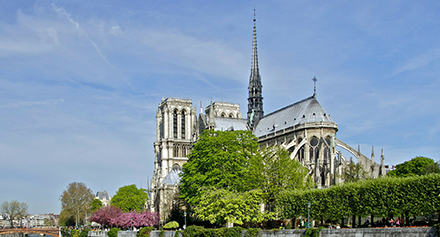The 2019 fire that ravaged the Notre Dame cathedral in Paris has forced officials to make a number of difficult decisions, including how to replace the spire that was destroyed in the blaze. Having chosen to rebuild the spire to match its classic design, the nation now faces a new and controversial chore: Where to find all that wood? Source: Forbes
According to Le Figaro, forestry teams are scouring the Conches and Breteuil massif, in the Eure region to find oaks that must be between 150 to200 years old. Time is running short.
President Emmanuel Macron had set a goal of rebuilding the spire by 2024. But the trees would first need to dry after being cut for between 12 to 18 months.
That means any trees chosen for the project must be chopped down by the end of March before the sap begins to rise in the Spring, according to Le Figaro.
“For the moment, we are in a phase of selecting the trees according to the structural parts that will be necessary for the spire,” said François Hauet, a forestry expert in Louviers and vice-president of the Normande Association of Forest Experts, in an interview with France Inter.
“We will choose trees in the forest according to their dimensions: height, diameter, quality, so as tobe able to extract the right structural pieces.” Philippe Gourmain, a forestry expert and member of France Bois Forêt, the association coordinating the tree harvest for Notre Dame, described the project as a kind of natural cycle of French history.
Ancient kings often planted large forests to have raw materials for projects or their naval armadas.
“It’s a bit of a natural French story that we will use to redo this historic framework,” Gourmain told France Inter.
But not everyone is so thrilled. Some environmental groups have criticized the move to cut down so many old-growth trees.
Sandra Plantier, an associate professor of secondary education in geography at the National Higher Institute of Teaching and Education (INSPE), is responsible for sustainable development training.
In a guest column for Reporterre, Plantier wrote that the tree harvest is “anachronistic” and ignores the connection between humans and the natural world.
Calling the trees “cathedrals for the biodiversity of our forests,” she wrote:
“Making the deliberate choice to cut down a thousand-hundred-year-old trees to reconstruct the spire of the cathedral and its framework can only appear as a blindness to reality, or, worse, as an inability to draw lessons from the current situation.”






